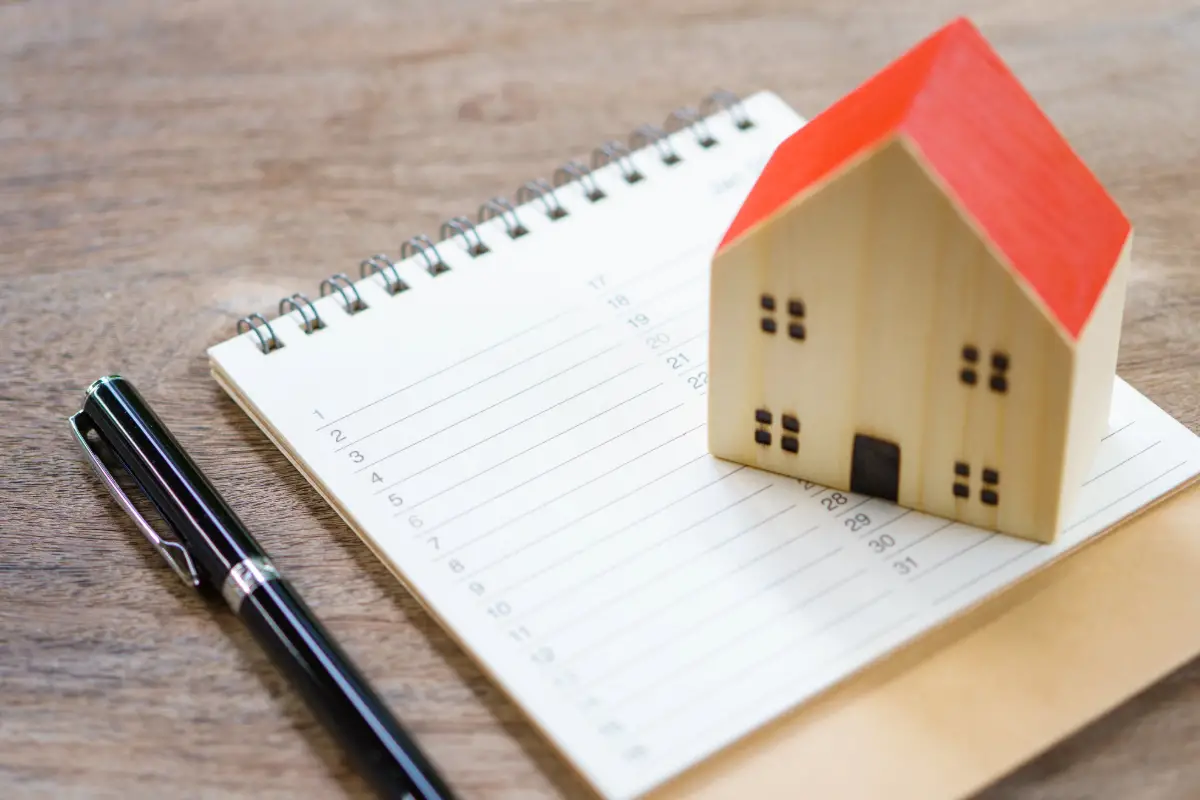Embarking on the path of real estate purchasing is an adventure marked with critical milestones, including the final walk-through. An integral phase in the home buying process, the final walk-through ensures that the property you purchase meets your expectations and standards.
Simultaneously, it provides an in-depth look at the key components involved, common areas often overlooked, and how modern technology can enhance the efficiency and accuracy of your inspection. As you delve deeper into the importance, fundamentals, and innovative techniques used in final walk-throughs, you’ll gain the knowledge to maneuver this process confidently and precisely.
Table of Contents
- Understanding the Walk-through Importance
- Key Components of a Walk-through
- Unveiling Common Oversight Areas
- Leveraging Technology for Walk-throughs
- Related Question
Understanding the Walk-through Importance
Stepping into the world of real estate is no less than venturing onto a thrilling roller-coaster ride. It starts with the adrenaline rush of finding the perfect property, culminates in negotiations and financial discussions, and finally slows down to the last but immensely critical step, the final walk-through.
Imagine this: You’ve poured hours into research, viewed numerous properties, and finally found that dream house. You’ve haggled over the price and secured a mortgage, and now all that’s left is to sign some papers, right? But hold on, there’s a crucial step before you enter your new kingdom – the final walk-through.
The final walk-through is not just a formality to glance over the property again but an essential step towards ensuring that your expectations match reality. If ever there was a time to channel your inner detail-obsessed detective, the final walk-through of a property is it. Being winningly thorough here can be the difference between living the dream or stepping into a nightmare.
The primary goal of the final walk-through is to check that the property is in the condition it was when you agreed to buy it and that all your negotiated agreements have been met. Are appliances updated as promised? Did they complete that fixture repair in the bathroom? Was that old hot tub removed? The minutiae matter as much as the grand-scale elements.
It would be bold to say that there’s an art to it, a skill. It focuses on the physical, tangible aspects and delves deeper into the unseen territory. For instance, there may be hidden problems you missed initially but may surface later. These could range from dampness in the basement to a leaking roof or faulty electrical wiring.
Equally significant is the communication with the seller. Remember, negotiation is not a whim-based process but an art of subtle persuasiveness. Check if the seller has met the conditions of the sale agreement, but ensure it’s done tactfully.
Moreover, the final walk-through gives you that last chance to back off the deal if things aren’t in order. This may sound daunting, but it’s better to deal with the inconvenience now than face the regret of investment gone awry.
One can’t underestimate the potential impact and significance of a well-done final walk-through. Like every industry, a quick inspection might save one from unfortunate events. So, equip yourself with diligence, keen eyes, and an astute mind. Insist upon a thorough final walk-through that will give you that much-needed peace of mind as you stride confidently towards your new home, sweet home.

Key Components of a Walk-through
Whether novice or seasoned, a property buyer’s walk-through is an indispensable part of the real estate process. However, without a comprehensive checklist, individuals may miss out on potential pitfalls or misalignments in the property. So, what constitutes an optimal walk-through list? Let’s dive in!
Comprehensive Agreement Review:
First and foremost, ensure your checklist includes a thorough review of the purchase agreement. It outlines the seller’s obligations and any included items or property benchmarks they must meet before finalizing the transaction.
Turn on Everything:
It’s surprising how often this gets overlooked. An integral part of any checklist is testing every possible item. Switch the lights on and off, test all appliances, run the taps, flush the toilets, activate the garage doors, etc. If it has an “on” button, switch it on.
Conduct a Final Inspection for Repairs:
If the seller agrees to make repairs, the final walk-through is the time to check if they have been done to your satisfaction. Consider hiring an expert for any complex repairs needing professional verification.
Check for any New Damages:
A common error is assuming that a property’s condition will be the same on walk-through day as on contract signing day. Inspecting for new damage caused after the seller vacated the premises is crucial.
Ensure Everything is Included:
If chattels or fixtures are included in the sale, as stipulated in the contract, authenticate their presence. This includes everything from appliances and furniture to outdoor fixtures, decorative items, and more.
Validate Vacant Possession:
Unless otherwise agreed, the property should be vacant, clean, and free of all trash and the seller’s personal belongings. Clothing in closets or unwanted furniture in the home is not your responsibility and should be addressed before settlement.
Examine the Exterior:
Don’t confine the walk-through to the interior; the exterior is equally important. Ensure the roof, gutters, and external plumbing are all in proper condition. Investigate the yard for signs of unkempt landscaping or unattended garbage that may attract pests.
Bring a Trusted Professional or Advisor:
Lastly, while the walk-through requires your scrutiny, bringing along a trusted professional or advisor can’t hurt. They can provide an objective viewpoint, and their experience might catch something you miss.
A walk-through is the final hurdle before acquiring a new property. This checklist gives you the basic knowledge to handle your final walk-through like a seasoned pro! This final stamp of satisfaction can pave the way for successful deals and secure investments throughout your real estate journey. Long live smart home buying!
Unveiling Common Oversight Areas
The crucible of a successful real estate transaction is often found in the overlooked details. In the final stage of a property handover, literally every corner matters. While most will instinctively focus on the core objectives, such as the condition and delivery of negotiated agreements, a savvy business mind will recognize the hidden opportunities in that crucial final walk-through. With industry knowledge accumulated from multiple sectors, let’s delve into these oft-missed aspects necessary to tilt the scales toward maximum value return.
A comprehensive review of agreements is arguably more critical during the walk-through than at any other stage. Too often, these carefully negotiated clauses are not revisited after the initial agreement stage. An intelligent entrepreneur verifies every point in the fine print as a precaution against post-purchase complications.
Test all utilities and appliances in the spirit of leaving no stone unturned. Run the water, flick every switch, and trigger all gadgets. This ascertains that everything is in working condition and opens the door to renegotiate if deficiencies are detected.
Next, it’s safe to conduct a final audit for repairs. Check-in on all fixes the seller agreed to undertake, ensuring that all tasks were satisfactorily concluded.
Another frequently overlooked step is to check for any new damages. Moving out may invariably cause unforeseen damage. Keeping a keen eye out for such instances can aid in swift repairs or adjustments in the final settlement.
An astute entrepreneur knows it’s not just about the bricks. Ensure everything discussed and included in agreements, like fixtures or furniture, is in accordance with the stated condition.
Undertake vacant possession validation. Ensure the property is entirely vacated. Anything left behind, like debris or discarded items, should be documented and shared with the seller for efficient handling.
Not forgetting the exterior, conduct a thorough check of the external spaces. Check the yard, fence, and mailbox – everything outside is directly linked to the property. Issues such as cracked pavement or damaged fencing should be immediately addressed.
Lastly, a tried-and-true trick of the top entrepreneurs is never to go it alone. Bring a trusted professional or advisor during the final walk-through for ultimate assurance. A second opinion never hurts, especially from a seasoned professional.
Remember, conducting a savvy final walk-through isn’t just about meeting conditions. It’s about employing innovative, insightful strategies to maximize satisfaction and security while minimizing potential pitfalls. Strive for consistent due diligence, be thorough, and leave no room for oversight. That’s the enterprising way to a successful real estate investment.

Leveraging Technology for Walk-throughs
Bringing Technology into the Final Walk-Through
Embracing technology in the process is the breakthrough today’s real estate industry needs. It’s time to leverage the power of tech tools designed to help buyers and real estate agents ensure a seamless, accurate, and more efficient final walk-through.
- Digital Documentation: Documenting findings during a walkthrough is no small feat. Imagine conducting this with the aid of a smart device, which could swiftly capture images, record videos, tally checklists, and allow you to generate digital documentation instantly. Promoting transparency and accountability could eliminate the tedious process of manual note-taking and ensure that essential data is not missed.
- Virtual Reality (VR) Tools: Virtual Reality isn’t just for gaming anymore. This tech innovation can transport you back into the property, helping you review different sections at your convenience. This means no corner is neglected, and you can spend additional time scrutinizing areas of concern, even from your home.
- Drones: Drone technology provides a bird’ s-eye view of the property. This enables you to check the condition of the roof, building exterior, and other hard-to-access areas, further assisting in identifying any potential issues.
- Home Inspection Apps: Mobile applications are increasingly becoming an asset for final walkthroughs. Home inspection apps, for instance, streamline the process, allowing you to input data, attach photos, and generate reports on the go. They can also provide essential checklists and reminders, ensuring a thorough walkthrough.
- Infrared Cameras: Old or hidden problems are rarely visible during a traditional walk-through. With infrared cameras, you can detect heating and cooling leaks, electrical faults, structural defects, and plumbing issues, to name a few. This tool equips you to preempt potential issues before they become significant problems.
After understanding these facets of a final walk-through, they are no longer uncharted territories but become guidelines for a necessary process every prospective homebuyer should be familiar with. Ensuring that the final walk-through is conducted systematically and rigorously is a step towards securing your investment and realizing the vision of your future home.
By being aware of the typical elements that a thorough checklist must include, identifying commonly neglected areas, and harnessing the power of technology, you will be equipped to spot potential pitfalls and ensure the utmost value for your investment. Ultimately, knowledge is power, and being well-informed means being prepared to upgrade the journey of home buying into a victorious experience.
You Can Listen To Our Podcast About How Can You Master Your Final Walk-through Checklist in Real Estate?
Below or By clicking here.

Real Estate Crunch gives you real property and real estate information and advice. We offer a free monthly newsletter; you can sign up for our newsletter by clicking here.
We also have a weekly podcast called “Real Estate Crunch,” found on all major podcast platforms. Listen to our podcast by clicking here.
Follow us on our social media platforms – Facebook and Instagram.
Related Question
Faster, Cheaper, And More Efficient: Benefits Of Prefab Homes
Prefab homes are the new way of building houses and other buildings. Pre Fab homes are built entirely or partly off-site, assembled, and placed on the foundation. This has many advantages to building houses with more advanced technologies and materials. This means homes can usually be built quicker and cheaper than a standard-built home.
By clicking here, you can read more about Faster, Cheaper, And More Efficient: Benefits Of Prefab Homes.
Prefab Vs. Modular Homes Explained
Prefab housing is prefabricated housing built in a factory-controlled setting and assembled on-site. Modular homes are also made in a factory study and assembled on-site, except modular homes usually refer to homes where more complete sections are built on-site.
By clicking here, you can read more about Prefab Vs. Modular Homes Explained.
Prefab Homes Delivered & Setup: Modern Solution For Housing
Prefab homes are built in factories using standardized components; these homes are delivered to the buyer’s desired location either fully or partially finished, ready for quick assembly onsite. With companies offering delivery and setup services, the process has become even more streamlined, eliminating the need for costly tradespeople and reducing wait times.
By clicking here, you can read more about Prefab Homes Delivered & Setup: Modern Solution For Housing.

